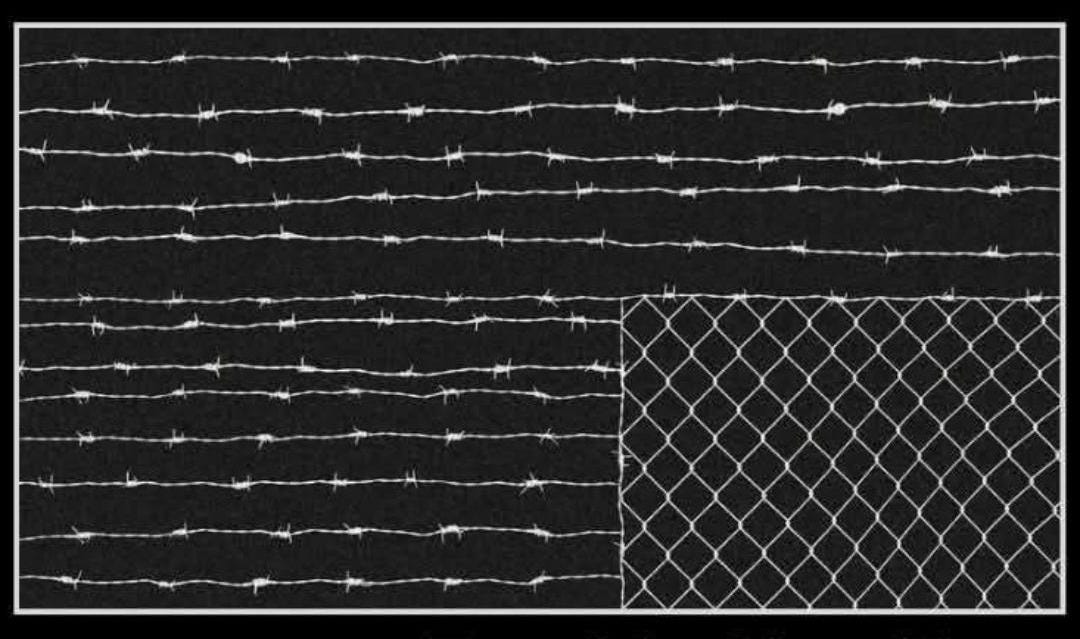Concentration Camp No. 4: The Florida Everglades
The nickname "Alligator Alcatraz" reveals the cruelty. The president and the OBBB reveal the future.
A story overshadowed by the OBBB in recent days is the opening of a new immigration detention center in the swamplands of the Florida Everglades. The Administration is calling it “Alligator Alcatraz”—a sadistic wink at both highway I‑75 (nicknamed “Alligator Alley”) and the notorious, long-closed island prison in San Francisco Bay. This facility—if it can be called that—is merely the next in a growing list of concentration camps the Administration has deliberately established to detain immigrants, alongside CECOT in El Salvador, Guantanamo Bay in Cuba, and Riker’s Island in New York. Sadly, with the passage of the OBBB, this page’s effort to track these unique detention centers is only going to get more complicated.
A review of the working definition of concentration camp, with notes regarding the current situation.
✅ A camp…
Hey, this facility has tents—that makes it super camp-like! For the record, it was built in eight days by the state of Florida next to a remote airstrip, which will be used to expedite deportations. It begs the question: if they can build a prison in eight days, why can’t they build homeless shelters just as quickly?
✅ …that concentrates people…
Reports vary, but at a minimum, they expect to hold 500–1,000 immigrant detainees initially, with the capacity to house up to 5,000.
✅ …in horrible conditions…
It’s in a swamp. It doesn’t have solid walls. It has already flooded. It’s surrounded by alligators, swarmed by mosquitoes, subject to extreme heat and humidity, and vulnerable to hurricanes—and remember, detainees are living in tents.
✅ …with little accountability…
It’s a prison 35 miles from Miami, in the middle of nowhere. There are no nearby observers. No cameras. No video. No press.
✅ …and which functions outside judicial protections.
There aren’t a lot of courts or lawyers in the swamp. Not that the detainees have been given the chance to find counsel or even enter the legal system. The level of extra-judicial action here and of the mass deportation effort, in general, is one of the most frightening aspects of all of this, as unidentified masked vigilante gangs roam our streets looking for, mostly, brown people—but, all things being equal, are more than willing to implicate anyone who gets in their way.
Asked whether the intent was for the alligators to eat escaping detainees, visiting President Trump replied, “I guess that’s the concept.” He added, “We’re surrounded by miles of treacherous swampland, and the only way out is really deportation”—unapologetically ignoring that the rule of law, including immigration law, is supposed to apply to every person held in U.S. custody.
It’s worth noting that during his visit, Trump also said the Administration was working to reopen the original Alcatraz. He claimed Governor DeSantis—who played tour guide during their cheerful stroll through the Everglades—plans to build at least one more of these camps. Even more alarming, with funding from the now-passed OBBB, ICE now has a larger budget than the Russian military. Yes, the entire Russian military—a nation currently at war. Much of that funding will go toward building more detention facilities across the country. You can see the signs next to your local strip mall, in that parking lot that has been sitting there, dusty and unused for years: “Opening Soon! Panera and ICE Detention Facility!”
Trump also said there are citizens—U.S. citizens—who should be detained in these camps. Granted, his brain is about as solid as an old cantaloupe, but the words coming out of his mouth fall well within the range of possibility for this regime.
Back to the Everglades, the dystopian nature of this facility is clear. Holding people behind natural barriers like alligators and swampland evokes any number of sci-fi films that pit humans against nature as punishment. But this is no movie. International human rights norms make clear that such a setup may well violate prohibitions against cruel and inhuman detention, as established by numerous treaties and UN guidelines, including the Nelson Mandela Rules (I mean, if you’re running afoul of the legacy of Nelson Mendela…). Environmental groups have warned of harm to local wildlife. The Miccosukee Tribe has publicly opposed the construction of the facility on its traditional territory. Quite simply, the invocation of nature as a “barrier” is a return to a carceral logic that the civilized world has repeatedly vowed not to repeat.
The opening of this most recent concentration camp is just the latest cruelty of this Administration—and the effects are beginning to show. A June 26 Quinnipiac poll found that 57% of registered voters disapprove of Trump’s immigration policies, up from 46% in January. And as the public learns of the torture experienced at CECOT by detainees like Kilmar Ábrego García, a U.S. immigrant deported there despite a legal order, the full cruelty of this administration’s actions will become harder and harder to ignore.
As Rep. Hakeem Jeffries said from the House floor yesterday, while symbolically filibustering the inevitable passage of the OBBB:
“We’re supposed to be better than this.”
In fact, we are better than this. We just have to do what it takes to wrest control back from the barbarians.





